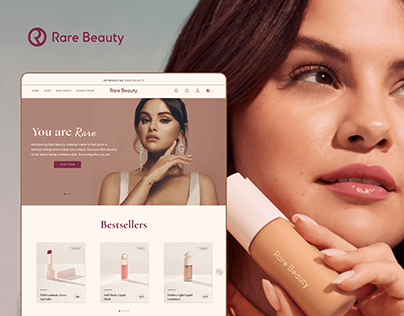The Internet Age: How Digital Marketing Changed the Beauty Industry
- ELIZABETH MOREL
- Apr 13
- 4 min read

Not too long ago, if you wanted to learn about a new beauty product, you’d flip through a magazine or see a commercial on TV. Maybe you’d spot a billboard or hear a jingle on the radio. But today? All it takes is a quick scroll on your phone.
The internet has completely transformed the beauty industry, and digital marketing is a huge reason why. Websites, online ads, reviews, blogs, and social media have replaced traditional advertising. And for beauty brands, that’s not a bad thing. In fact, the online world has helped them grow like never before.
Let’s break down how digital marketing helped reshape beauty and why your clicks, searches, and reviews matter more than ever.
From Print to Pixels: The Big Switch
Back in the day, beauty ads were all about glossy magazine pages and perfect-looking models. But that kind of advertising didn’t offer much interaction. You saw an ad, maybe circled a product you liked, and moved on.
Now, thanks to the internet, advertising has gotten smarter, and more personal. Instead of just showing you a product, digital marketing talks to you. Brands can create blogs, newsletters, and website content that explain exactly how a product works and why it’s right for you.
According to CNN (Dolan, 2021), beauty trends have always evolved based on what’s going on in society. And today, that evolution is happening online, faster than ever.
Ads That Know You (Maybe Too Well)
Have you ever looked at a beauty product online and then seen it pop up everywhere? That’s not your imagination, it’s targeted advertising. Beauty brands use data from your searches, clicks, and purchases to show you products they think you’ll like.
These ads appear on Google, YouTube, beauty blogs, and even in games or apps. This strategy helps brands reach the right people at the right time.
And let’s not forget affiliate marketing. When influencers or bloggers share a product link, they often get a small cut if someone makes a purchase through it. This creates a whole new kind of ad that feels more like a recommendation from a friend than a sales pitch.
E-Commerce: Shopping Made Simple
The internet didn’t just change how beauty brands market their products—it changed how we buy them. Thanks to e-commerce, you can shop for skincare, makeup, and haircare from your couch in your pajamas.
Big brands like Rare Beauty and Fenty Beauty have built powerful online stores. According to Cucu (2024), Rare Beauty’s website and online presence focus on community and inclusivity, helping them stand out in a crowded market.
Since you can’t test products online like you can in a store, beauty brands have had to adapt their marketing:
- They show lots of photos and videos on different skin tones.
- They describe the product in detail: what it does, who it’s for, and how to use it.
- They include customer reviews and real-life results.
And now with TikTok Shop and Instagram Checkout, the line between discovering a product and buying it is almost invisible.

Why SEO and Reviews Are Everything
Ever searched for something like “best face wash for acne” or “cruelty-free mascara”? That’s where SEO (Search Engine Optimization) comes in.
Brands create content that includes keywords and helpful info so they’ll pop up when you search. The goal? Get on that first page of Google. According to the Australian Marketing Journal (Enriquez et al., 2024), the way brands frame their online messaging can even impact your self-esteem and shopping behavior.
Once you're on a product page, what’s the first thing you look at? Reviews. Honest feedback from real people builds trust. One study (Macheka et al., 2023) showed that online reviews, especially paired with celebrity endorsements, can strongly influence what young people buy.
Even more powerful? When brands use this feedback to improve. The internet lets customers speak up, and good brands actually listen.
In Summary
The beauty industry isn’t just about pretty packaging anymore. It’s about connection, conversation, and convenience, and the internet has made all of that possible. Whether it’s a smart ad that shows up when you need it or a five-star review from someone who has your skin type, digital marketing is behind the scenes helping you find what works best for you.
So the next time you scroll past an ad, leave a review, or watch a skincare tutorial on YouTube, just know: you're part of the beauty industry’s digital evolution.
References
Enriquez, A., Paik, S.-H. W., & Moon, Y. E. (2024). The impact of cosmetic and beauty campaigns on women’s mentality. Australasian Marketing Journal. https://doi.org/10.1177/14413582241263156
Macheka, T., Quaye, E. S., & Ligaraba, N. (2023). The effect of online customer reviews and celebrity endorsement on young female consumers’ purchase intentions. Young Consumers, 25(4), 462–482. https://doi.org/10.1108/yc-05-2023-1749
Cucu, E. (2024, June 11). Rare beauty’s marketing strategy: Socialinsider. Socialinsider Blog: Social media marketing insights and industry tips. https://www.socialinsider.io/blog/rare-beauty-marketing-strategy/
Dolan, L. (2021, June 1). A history of beauty trends – and the standards that shaped them. CNN. https://www.cnn.com/style/article/beauty-trends-history/index.html



Comments